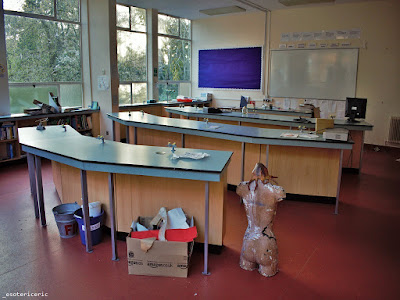History
T.G. Green was founded by Thomas Goodwin Green back in 1864. Rumour has it that he bought up an existing pottery factory while he was on his honeymoon with his new wife, Mary Tenniel, the sister of Punch and Alice’s Adventures in Wonderland illustrator Sir John Tenniel.
One of the companies most popular lines has always been Cornishware which was first produced in 1924. It was created using a nifty lathe-turning technique that scraped blue slip away from its beautiful ceramics to reveal white bands of clay beneath. Those stripes reminded an employee of the blue skies and white-crested waves of Cornwall, which is how Cornishware got its name.
The appearance of those familiar blue and white stripes in children’s books, adverts, fashion magazines, collector’s websites and homes all over the world is testament to Cornishware’s timeless design and enduring popularity. From plates to cups to storage jars, Cornishware was such a roaring success that it soon became a household name, adorning dinner tables up and down the country.
In the 1960s, Cornishware’s look was updated by talented young designer, Judith Onions, and the restyled range was embraced as warmly as the originals. Over the past 20 years Onions’ designs, as well as the older ranges, have become highly prized by collectors, commanding ever-increasing prices.
Sadly, the story didn’t go as well for T.G.Green. As time went on, it became increasingly difficult for the Victorian pottery workshop to compete with modern industry, and after a series of owners tried their best, it closed in 2007.
Luckily, T.G.Green and Cornishware had fans in all the right places. Lifelong enthusiasts, Charles Rickards and Paul Burston teamed up with designer and brand consultant, Perry Haydn Taylor to come to the rescue. Thanks to their expertise, those wonderful stripes have been restored to their rightful position.
Source:
https://www.cornishware.co.uk/about-us/
Esoteric Eric
History
The Beacon Waste Incinerator was used by Worcestershire County Council to dispose of waste, and ceased operating in the early 2000s.
Esoteric Eric
History
A Quaker clothier, a mayor and an order of Roman Catholic nuns have all called this remarkable property in Battenhall Avenue, Worcester, home.
Originally called Battenhall Mount, it was built around 1865-9 for William Spriggs, a Quaker and Worcester clothier.
His profession would have given him a keen eye for what was in vogue and this was true when it came to the design of the house, which was done in the Italian style popularised by Prince Albert.
Some 20 years later, local architect John Henry Williams enlarged it for the Mayor of Worcester, the Hon. Alfred Percy Allsopp, though he made sure the work was done in keeping with the original building.
A grand entrance drive and gate house were added, the gardens landscaped and a magnificent music hall and adjoining marble hall created.
The reception room, mostly Georgian in design, and the dark wood-panelled Jacobean-style dining room (used as a staff room in later years) reveal the sumptuousness of the accommodation. The crowning glory of the building was the family chapel which was based on the plan of an Italian Renaissance Church.
In 1933 it was purchased – after some reservations about its ornate decor – for the Sisters of St Marie Madeleine Postel, a Roman Catholic teaching order, which turned it into a convent school.
In the 80 years it was open, St Mary’s took pupils from nursery to senior school age , adding properties and extensions to answer its need for more space.
The early years department was housed in a former stables with hay loft over, a carriage house with groom’s quarters over and washing bay to front, a sick bay and forge, all of which date from around 1893.
The main school is a substantial two-storey period building with cellars and both single and two-storey additions.
Together they sit in a site of 6.4 acres.
The junior school is opposite the main school on a plot of 2.5 acres. It is a substantial three-storey detached Victorian building with later additions that were used as a sports hall. To the rear there are sports fields.
In addition there is also The Lodge, a three-storey detached residence on the driveway to the main school building.
The Cottage is a detached two-storey residence towards the south of the main site on Battenhall Avenue.
The school buildings are Grade II listed.
Source:
http://www.birminghampost.co.uk/lifestyle/house-homes/italian-style-former-school-could-make-9338587
Esoteric Eric
History
A former John Smiths brewery which is now being used as a recycling plant turning food and garden waste in to energy.
Esoteric Eric
























































